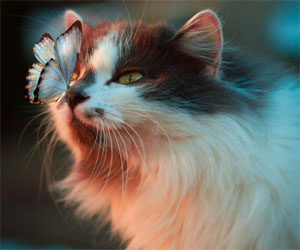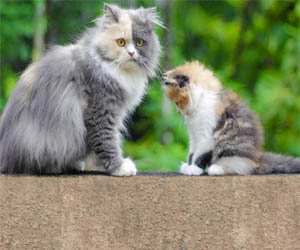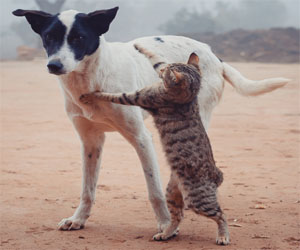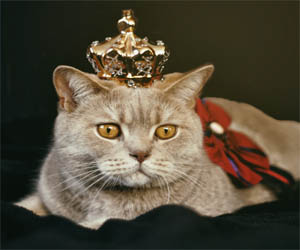


Top Tips For Success

Participating in canine competitions is an exciting way to showcase your dog's talents and strengthen the bond between you and your furry friend. Whether you're interested in obedience trials, agility courses, or any other canine sport, success in these competitions often comes down to preparation, training, and a deep understanding of the event. In this article, we'll explore some invaluable tips to help you and your dog excel in canine competitions.
1. Start Early: Begin training your dog for the specific competition well in advance. Early training helps your dog become comfortable with the skills and commands needed for the event. It also allows time for gradual improvement and refinement.
2. Consistency Is Key: Consistency in training is vital. Use the same cues, commands, and techniques throughout your training sessions. Dogs respond well to predictability and repetition, so keeping things consistent helps them understand what is expected of them.
3. Positive Reinforcement: Use positive reinforcement methods like treats, praise, and play to motivate and reward your dog during training. Dogs are more likely to learn and retain commands when they associate them with positive experiences.
4. Know The Rules: Familiarize yourself with the rules and regulations of the competition you're entering. Each event has specific guidelines and expectations, and understanding them is essential to ensure your dog's success.
5. Find A Qualified Trainer: Consider seeking the assistance of a professional dog trainer who specializes in the specific competition you're interested in. They can provide expert guidance and help you and your dog refine your skills.
6. Gradual Exposure: Gradually expose your dog to the competition environment. Start by practicing in familiar settings, then gradually introduce new elements, such as different locations, distractions, and other dogs. This helps your dog adapt to the competition environment.
7. Practice Under Pressure: Create situations that mimic the pressure of competition. Invite friends or fellow competitors to observe your training sessions. This helps your dog become accustomed to performing under the watchful eyes of an audience.
8. Keep Training Sessions Short And Positive: Dogs have limited attention spans, so keep training sessions short and focused. Training should be enjoyable for your dog, so make it a positive experience, and always end on a high note.
9. Health And Nutrition: Maintain your dog's health and ensure they are in optimal physical condition. Proper nutrition and regular exercise are essential for peak performance.
10. Focus On Bonding: Remember that the journey is just as important as the destination. Your bond with your dog is the foundation of success. Enjoy the process, and cherish the moments you spend together in training and competition.
11. Manage Your Own Stress: Dogs are remarkably attuned to their owners' emotions. Stay calm and composed during competitions to help your dog stay focused and relaxed. Keep in mind that every run or performance is a learning opportunity, regardless of the outcome.
12. Set Realistic Goals: Recognize your dog's abilities and set realistic goals. Not every dog will be a champion, but every dog can enjoy participating in canine competitions and learning new skills.
Participating in canine competitions can be a fulfilling and rewarding experience for both you and your dog. By following these tips and embracing the journey with dedication and love, you can maximize your chances of success while strengthening the bond you share with your four-legged companion.
Nature's Artistry In Fields
 Wind And Atmospheric Conditions
Wind And Atmospheric Conditions
One of the most common natural explanations for crop circles involves the interplay of wind and atmospheric conditions. Some crop circles are thought to be created when whirlwinds or vortices occur, often referred to as "dust devils." These whirlwinds can generate powerful winds that bend and flatten the crops, forming circular patterns. The precise geometric shapes in some crop circles can be attributed to the organized flow of air currents during these events.
Plants' Response To Physical Stress
Crops, particularly cereal grains like wheat and barley, are known to exhibit unique responses to physical stress. When plants are subjected to mechanical pressure, they can exhibit what's known as "node elongation." This phenomenon causes the plants to stretch and bend at specific nodes, resulting in a bending pattern that forms a circular shape when viewed from above. These natural responses to stress can create crop circles with intricate designs that mimic human-made ones.
Electromagnetic Fields
Some crop circle enthusiasts propose that electromagnetic fields may play a role in the formation of these patterns. It's suggested that these fields could affect the growth of crops, causing them to bend and form circular shapes.


A Comprehensive Guide To Feline Well-Being
 Cat-Proof Your Home: Make your living space safe for your new feline friend. Remove hazards, secure toxic substances, and create cozy hideaways where your cat can retreat.
Cat-Proof Your Home: Make your living space safe for your new feline friend. Remove hazards, secure toxic substances, and create cozy hideaways where your cat can retreat.
Essential Supplies: Ensure you have the necessary supplies, including a litter box, food and water dishes, a scratching post, toys, and a comfortable bed.
Providing Nutrition And Hydration
Proper nutrition is crucial for your cat's health and well-being:
High-Quality Cat Food: Choose high-quality cat food that meets your cat's specific dietary needs. Consult with your veterinarian to determine the best diet for your cat's age, activity level, and any specific health concerns.
Fresh Water: Ensure your cat has access to fresh, clean water at all times. Cats can be picky about their water source, so consider a cat water fountain if your cat prefers running water.
Litter Box Maintenance
A clean litter box is essential for your cat's hygiene and happiness:
Regular Cleaning: Scoop the litter box daily and change the litter regularly to keep it clean and odor-free.

Hydration: Proper hydration is essential for cats, as they often don't drink enough water. Encourage water intake by placing multiple water bowls around the house and ensuring they are fresh and clean. Some cats prefer running water, so a cat water fountain may be a great investment.
Regular Vet Check-Ups: Regular visits to the veterinarian are crucial to detect and prevent health issues early. Annual check-ups, vaccinations, and dental care are essential for your cat's well-being. Cats are masters at hiding illness, so regular examinations are essential.
Vaccinations: Ensure your cat is up-to-date on vaccinations to protect them from common diseases. Discuss a vaccination schedule with your veterinarian based on your cat's lifestyle and risk factors.
Dental Care: Dental health is often overlooked but is integral to a cat's overall well-being. Brush your cat's teeth regularly and provide dental treats or toys to help maintain good oral health.
Grooming: Regular grooming is not only about maintaining a beautiful coat but also about monitoring your cat's health. Grooming sessions provide an opportunity to check for skin issues, fleas, and lumps or bumps.
Parasite Prevention: Keep your cat protected from parasites like fleas, ticks, and worms. Use preventative treatments recommended by your veterinarian to ensure your cat remains parasite-free.
Spaying And Neutering: Consider spaying or neutering your cat to prevent unwanted pregnancies and reduce the risk of certain health issues. Discuss the appropriate age and timing with your vet.
Litter Box Hygiene: Clean the litter box regularly to encourage proper litter box habits and maintain a clean environment. A dirty box can lead to stress and health problems.
Mental And Physical Stimulation: Cats need mental and physical stimulation to stay happy. Provide toys, scratching posts, and interactive play sessions to keep your cat engaged. Puzzle feeders can also challenge their minds.
Social Interaction: Cats are social animals, and their happiness is often linked to human and feline companionship. Spend quality time with your cat, and consider adopting a second cat to keep them company if they're alone for long periods.
A Guide To Effective Dog Training
 Positive Reinforcement
Positive Reinforcement
Positive reinforcement is one of the most effective methods for cultivating good behavior in your pup. This technique involves rewarding your dog when they exhibit desirable behavior. Treats, praise, toys, and affection are common rewards. When your pup associates good behavior with positive outcomes, they are more likely to repeat those actions.
Clicker Training
Clicker training is a precise and rewarding method for teaching dogs new behaviors. A small device, the clicker, emits a distinct sound that signals to your pup when they have performed the desired action correctly. This method enables clear communication and makes it easier for your pup to understand and learn commands.
Obedience Training
Obedience training focuses on teaching your pup essential commands like sit, stay, and come. These commands provide the groundwork for good behavior and ensure your pup's safety in various situations. Consistency and patience are key when practicing obedience training.
Crate Training
Crate training is an effective method for housebreaking your pup and providing them with a safe, comfortable space. Pups have a natural instinct to seek out enclosed spaces, and crate training takes advantage of this. The crate becomes a secure den for your pup and helps prevent accidents in the house.
Leash Training
Leash training is crucial for well-behaved walks and outdoor activities. Proper leash training teaches your pup to walk beside you without pulling and respond to cues like stopping or changing direction. It promotes a sense of control and safety during walks.
 Recurring Dreams: Some individuals experience recurring dreams where the same themes, scenarios, or even specific characters reappear. These dreams may be a subconscious attempt to grapple with persistent issues, providing an opportunity for self-reflection and problem-solving.
Recurring Dreams: Some individuals experience recurring dreams where the same themes, scenarios, or even specific characters reappear. These dreams may be a subconscious attempt to grapple with persistent issues, providing an opportunity for self-reflection and problem-solving.
Premonitions: Some people claim to have dreamt of events before they occurred, a phenomenon known as precognitive dreaming. While the scientific validity of these claims remains a subject of debate, many believe these dreams to be glimpses of the future.
Sleep Paralysis: Sleep paralysis is a frightening phenomenon in which individuals wake up from a dream, unable to move, and may experience hallucinations or a sense of impending doom. It occurs as one transitions between sleep and wakefulness and is often linked to a disrupted sleep cycle.
Déjà Vu: Déjà vu is the feeling that a current experience has been previously encountered in a dream. This intriguing phenomenon has been the subject of much speculation and has sparked questions about the relationship between dreams and reality.
False Memories: Dreams have the power to create false memories. People may vividly recall events from their dreams as if they were real, blurring the lines between dream and waking life.
Out-Of-Body Experiences (OBEs): Some individuals report having dreams where they view their own bodies from an external perspective. These experiences can be both profound and disorienting, challenging our understanding of consciousness and self.
Epic Dreams: Epic dreams are those that seem to unfold over extended periods, sometimes covering the span of a lifetime within a single dream. These dreams can be rich with symbolism and often leave a lasting impact on the dreamer's waking life.
Telepathic Dreams: Some people claim to have dreamt of events or communicated with others telepathically during their dreams. The scientific explanation for such occurrences remains elusive, but they continue to intrigue and baffle researchers.





